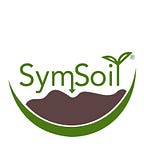Soil Food Web in 8 Pictures
Sometimes an idea is profound and radical, yet in its detail so complex that it take awhile to fully grasp. The role of biodiversity in soil health and effective carbon sequestration is an example of this type of complexity.
Originally described in the academic literature in the 1980’s as the Soil Food Web, the vocabulary and images have changed and evolved over the decades.
The short version? The Soil Food Web is the community of organisms living all or part of their lives in the soil. It has much in common with the gut biome, but in the soil. 7 types of life, interact with plants, minerals, organic matter and each other, ultimately feeding plants and positively impacting human health.
Unlike a food chain, which describes a linear, energy pathway through an ecosystem, a food web is a more complex transfer of energy between species in an ecosystem. Plants use the sun’s energy to convert inorganic compounds into energy-rich, organic compounds, turning carbon dioxide and minerals into plant material by photosynthesis. Plant roots exude acids, sugars, and ectoenzymes into the rhizosphere, feeding the soil microbe biome.
The biodiversity was first described Dr. Elaine Ingham, a microbiologist and soil biology researcher. She is still known as a leader in microbiology and is the founder of the Soil Foodweb Institute. Dr. Ingham is the former Chief Scientist at The Rodale Institute and the author of the USDA’s Soil Biology Primer.
Many have tried to present the complex soil ecosystem in ways that are more understandable to science enthusiasts.
There tens of thousands of species in healthy soil, so even stating 7 types of life is a gross simplication.
One of the early attempts, Life in the Soil, tried to convey the relative size of the seven major types of life. Although none can be seen by the naked eye, they vary by orders of magnitude.
Nature.com presented the system as flow chart. Their description: Soil biota consist of the micro-organisms (bacteria, fungi, archaea and algae), soil animals (protozoa, nematodes, mites, springtails, spiders, insects, and earthworms) and plants living all or part of their lives in or on the soil or pedosphere. Millions of species of soil organisms exist but only a fraction of them have been cultured and identified. Microorganisms (fungi, archaea, bacteria, algae and cyanobacteria) are members of the soil biota but are not members of the soil fauna.
The soil fauna is the collection of all the microscopic and macroscopic animals in a given soil. Soil has a direct effect on the environmental conditions, habitat and nutrient sources available to the soil biota. The term pedosphere is often used interchangeably with soil and captures the concept that the soil is a habitat where the integration of spheres occurs.
From Frontiers of Microbiology, comes another image and description: Below ground Microbiota and the Health of Tree Crops by Jesús Mercado-Blanco, was published June 2018.
Our first reaction was wow! Nice job by the researchers, followed by a chuckle. They recognized that this Spirograph image is a “simplified version of the soil food web” and the original paper had an equally complex, second diagram (B) to help explain the first one (A, shown here).
Our friend, Matt Powers, of the Permaculture Student has one of the most colorful versions.
We are not convinced that any human mind will ever be able to comprehend all of the details of the soil microbe biome.
Nevertheless, we encourage you to follow your interest and dive into the details using the following links:
Bacteria & Archaea
Fungi
Amoebae
Flagellates
Beneficial Nematodes
Micro Arthropods
About SymSoil® Inc.
SymSoil is an evidenced-based soil health company and leader in development of biological soil amendments for agriculture. The company provides products and servics that restore the microbes that provide the right food to plant roots, improving plant health, and making food more nutrient dense and flavorful, the way nature intended. SymSoil has products and services which assist growers in improving profitability. Its flagship product, SymSoil® RC (Robust Compost) is a complex community of soil microbes, which includes in excess of 1,000 species, covering broad biodiversity of bacteria, fungi, amoebae, and other protozoa, beneficial nematodes and microarthropods. SymSoil was named one of 2019’s AgTech Companies to Watch. Accredited Investors can learn more about SymSoil as an impact investment here.
Originally published at https://symsoil.com.
